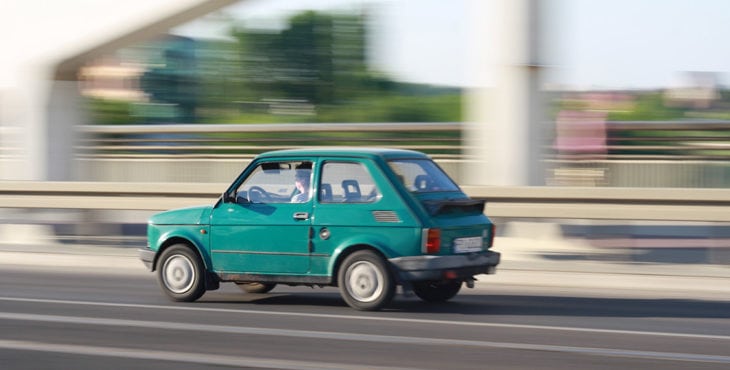The program ‘Rodzina 500 plus’ was one of the flag promises given by the Law and Justice party during the elections in 2015 aimed at increasing the number of children being born in Poland and improving the general well-being of families with children. The new law was adopted in February 2016.
There are a lot of nuances to the whole scheme, but the most important thing is that a lot of expats living in Poland are eligible to receive the money and can benefit from the program.
Everything you need to know about the ‘Rodzina 500 plus’ program
‘Rodzina 500 plus’ is, fittingly, a governmental benefit in the amount of 500 PLN paid monthly to support families who:
1. Have at least two minor children
2. One child and the family income per capita is lower than 800 PLN after tax
3. One disabled child and the family income per capita is lower than 1200 PLN after tax
Every next eligible child is supported with another 500 PLN. That means that for example, a family of 5 (2 parents and 3 children) can receive 1000 PLN a month.
It’s important to note that in Poland a minor is defined as a child younger than 18 years old. When the child reaches the age of maturity the status of the ‘first child’ goes to the oldest under-aged child.
Let’s look at a complicated case of a family of 4, 2 parents and 2 kids age 22 and 14. Their monthly income is 3000PLN net per month. Normally, the family wouldn’t be eligible to receive the benefit as there is only one minor child, but because of the income (3000PLN is less than 800PLN per capita), they can receive the benefit. When the oldest child turns 25 is no longer taken into account in the family income calculations and the family loses their status and no longer can get the support.
The last thing to be mentioned is that the marital status of parents is irrelevant. Any type of family is eligible to receive the support (married couples, cohabiting parents, single parents, foster families, etc.). Divorced parents who equally share their custody of the child can both apply for a benefit for their term of custody.
Who is eligible to receive the ‘Rodzina 500 plus’ child benefit
Apart from the Polish citizens, ‘Rodzina 500 plus’ is a benefit that can be obtained by the following 4 groups of people:
1. EU and EEA citizens
All EU and EEA countries are subject to the common regulations and coordination of social security system. Thanks to that EU and EEA citizens can apply for the benefit.
2. Citizens of countries that signed special bilateral agreements with Poland: Australia, Bosnia and Herzegovina, Canada, Macedonia, Moldova, Montenegro, United States, Ukraine, Serbia and South Korea.
3. EU Blue Card holders
Holders of the EU Blue Card (which is an approved EU-wide work permit) are entitled to apply for the benefit no matter of their citizenship.
4. People who can legally work in Poland
If your ‘Karta pobytu’ has an annotation ‘DOSTĘP DO RYNKU PRACY’ meaning that you can legally work in Poland and:
— your work permit is given for longer than 6 months
– your residence permit was not obtained for studies
– you have not been working in Poland on the basis of a visa
you are eligible to apply for the ‘Rodzina 500 plus’ benefit.
People staying in Poland on the basis of their refugee status, subsidiary protection or consent for stay issued won’t have this annotation. However, if you’re allowed to work in Poland you can still receive the support but it may more difficult to apply for it and you may require legal assistance.
‘Rodzina 500 plus’ and other benefits
The 500 PLN that you receive from the government is not taxed so you will receive the full amount which equals to 6 000 PLN annually per eligible child.
Money from ‘Rodzina 500 plus’ is not included in the income when establishing your entitlement to other benefits: social assistance, alimony fund, family benefits, housing allowance and scholarships for students.
Importantly, families who receive a similar type of benefits from other EU country are not eligible to apply for the ‘Rodzina 500 plus’.
How to apply for the ‘Rodzina 500 plus’ benefit
The program is divided into annual reference periods starting from the 1st of October and ending on the 30th of September. To receive the benefit you need to apply for it every year.
It’s important to note that you can join the system at any time. The benefit will be paid starting from the month when you applied.
The current reference period
The current reference period will end on the 30th of September 2018. The applications for the new reference period can be submitted either online from the 1st of July 2018 or in the local council from the 1st of September 2018.
The application form
The application ‘Rodzina 500 plus’ is only available in Polish and can be found here. As the form is long and complicated the best would be to fill it out with a native Polish speaker.
The application is always based on the previous tax year, therefore for the new period, you should take into consideration your income from 2017. Please, note that you need to attach a proof of your income.
Last but not least, the application can be submitted to your local council, by post or online.










































